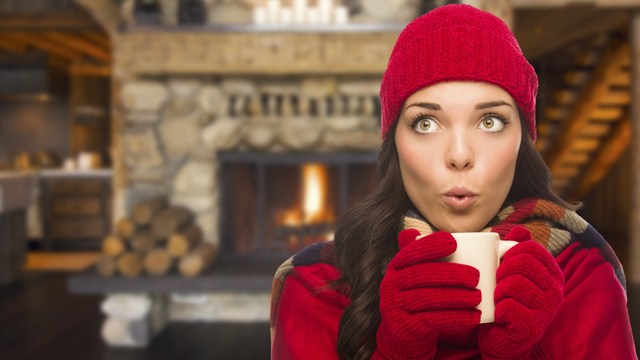 Andy Dean Photography/PhotoSpin
Andy Dean Photography/PhotoSpin
Portable space heaters, kerosene heaters, fireplaces and wood stoves can be a great extra source of warmth when winter days are brutally cold. But these heat sources must be treated with respect.
According to the U.S. Fire Administration, 3400 Americans die and 17,500 are injured in home fires every year.
Electric space heaters should be chosen carefully. Look for heaters that have been evaluated by nationally recognized laboratories. Make sure your heater switches off automatically when knocked over, and has a thermostat control mechanism.
Don't hang clothes near a heater to dry them. Don't store anything on top of the heater. Don't put anything flammable within three feet of a heater. Children should never be left alone in a room with a space heater.
Only plug your heater into a wall outlet, rather than into a power strip or extension cord. Cords for a heater must be out of the way so nobody trips over them. Don't run them under the rug. When the heater isn't on, be sure to unplug it.
Kerosene heaters should also be evaluated by a nationally recognized laboratory. Find out from the fire department whether or not kerosene heater use is legal in your area. Use crystal clear K-1 kerosene. Camp stove fuel or gasoline are not safe alternatives.
Let your heater cool off completely before adding fuel. Always refill it outside. Be careful not to overfill, and only use your heater in a room that is well ventilated.
Wood stoves must be installed according to installation and maintenance instructions from the manufacturer. Your wood stove should be constructed of plate steel or cast iron metal. It should be inspected for cracks. Door seals, hinges and legs should have smooth seams and joints.
Have the chimney and pipes inspected every year. Look it over every month for possible obstructions or damage.
Wood should be fully seasoned. Avoid artificial logs or junk wood and other burnables. Pellet stoves are meant to burn dry seasoned wood pellets and nothing else.
Fireplaces need frequent cleaning since creosote builds up in the chimneys. Have your chimney inspected for cracks and obstructions.
Before you start a fire, be sure you open the damper first. Don't burn green (unseasoned) wood, garbage, or paper in the fireplace to avoid excessive creosote buildup.
To prevent rolling logs from starting a fire in your living room, have a heavy screen in place that covers the opening. This will also contain any flying sparks.
Don't go to bed or leave the house if a fire is going. Safety mandates that the fire be completely extinguished.
Dispose of ashes only after they are completely cooled. Then put them in a metal container with a tight covering. The container should be at least 10 feet away from the house and any other buildings. Saturate ashes with water. Never empty ashes into a garbage can.
What if you don't have heaters, a wood stove or fireplace for extra warmth on bitterly cold days? What if your furnace just can't keep up?
Resist the temptation to heat your house with your stove or oven.
Don't bring a gas or charcoal grill inside for warmth. The fumes can kill you.
Don't use a gasoline powered generator in the house, garage or near your windows or doors. This will prevent the risk of carbon monoxide poisoning.
If you're still shivering, wear extra layers of clothes, including a hat, scarf, gloves and jacket or coat if necessary.
A working smoke alarm can help keep your home safe. Keep a multipurpose, dry-chemical fire extinguisher handy. Get yourself a battery-operated carbon monoxide detector. Have a home escape plan in place and practice it regularly.
Sources:
Heating Fire Safety: Wood Stoves, Space Heaters and Fireplaces. USFA.FEMA.gov. Retrieved Feb. 3, 2014.
http://www.usfa.fema.gov/citizens/home_fire_prev/heating/hotspot.shtm
Home Heating Safety During Cold Weather. Sites.UCI.edu. Retrieved Feb. 3, 2014.
http://sites.uci.edu/emergencymanagement/2013/01/11/home-heating-safety-...
Heat Your Home Safely. BT.CDC.gov. Retrieved Feb. 3, 2014.
http://www.bt.cdc.gov/disasters/winter/duringstorm/indoorsafety.asp
Visit Jody's website at http://www.ncubator.ca
Reviewed February 4, 2014
by Michele Blacksberg RN





Add a CommentComments
There are no comments yet. Be the first one and get the conversation started!